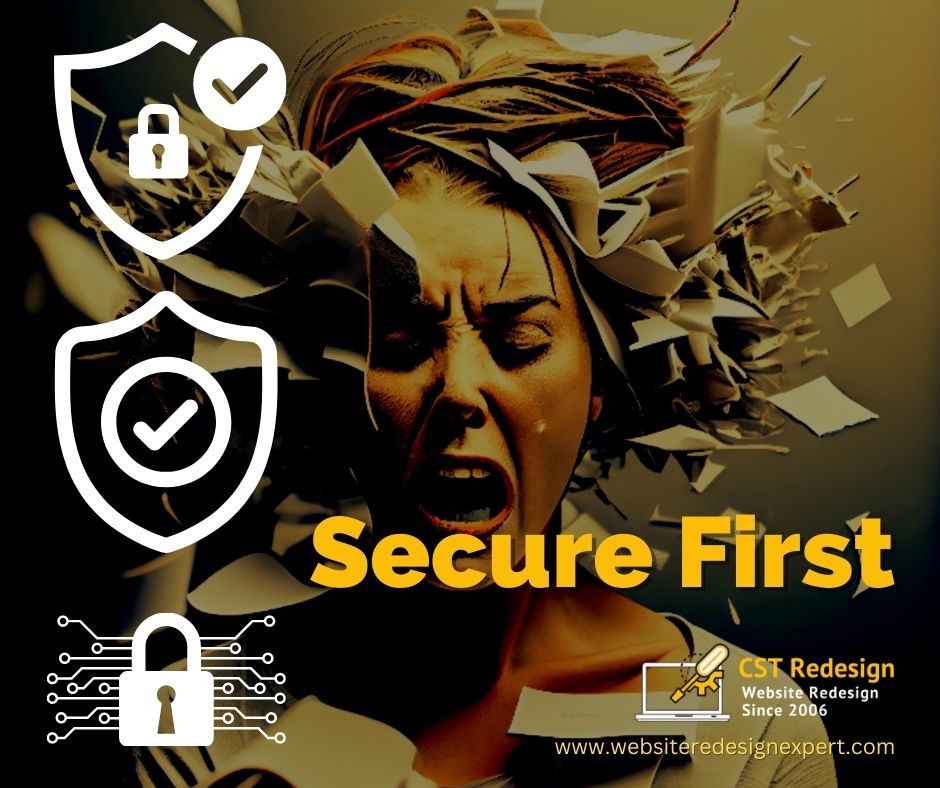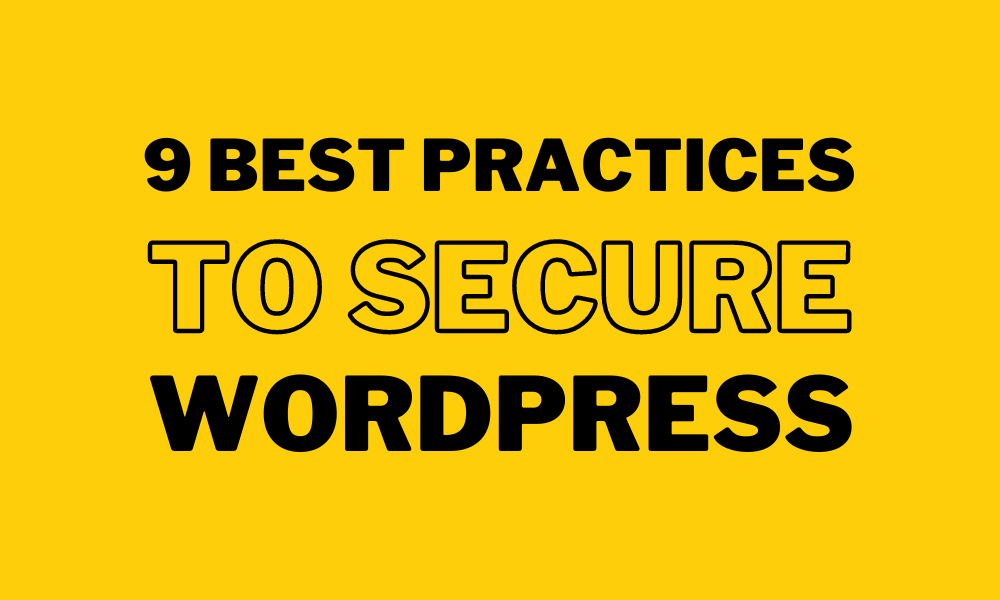Best Practices To Secure WordPress Site:
A Comprehensive Guide For Beginner!
Protect Your Site from Security Breaches and Hackers by Following These WordPress Security Best Practices.
I. Introduction
- Importance of WordPress security
- Risks of insecure WordPress sites
II. Best Practices To Secure WordPress Site
- Keep WordPress and Plugins Up-to-Date
- Use a Strong Username and Password
- Limit Login Attempts
- Use SSL (Secure Sockets Layer)
- Use Two-Factor Authentication (2FA)
- Remove Unused Plugins and Themes
- Backup Your Site Regularly
- Use Security Plugins
- Choose a Secure Hosting Provider
III. Conclusion
- Summary of best practices
- Importance of following these best practices for WordPress security

Introduction:
WordPress is a popular content management system that powers over 40% of all websites on the internet. Its ease of use, flexibility, and customization options make it an excellent choice for creating websites of any kind.
However, with its immense popularity comes the risk of security breaches. Hackers and malicious actors often target WordPress sites due to their sheer volume and potential for data theft.
Therefore, it’s essential to follow best practices to secure your WordPress site and protect your data. In this post, we’ll cover nine best practices for securing your WordPress site.
II. Best Practices for WordPress Security
Keep WordPress and Plugins Up-to-Date:
- Keeping your WordPress site up-to-date is critical for maintaining site security.
- WordPress is continuously updated with bug fixes, security enhancements, and new features.
- Similarly, plugins used on your site must also be kept up-to-date, as they can contain vulnerabilities that hackers can exploit.
- Regular updates ensure that your site has the latest security patches, reducing the risk of cyber threats.
- To update WordPress, go to the Dashboard, click on Updates, and select Update Now.
- For plugins, go to Plugins, and you will see a notification if updates are available.
Use a Strong Username and Password:
- A strong username and password are crucial for securing your WordPress site.
- Avoid using simple and easy-to-guess usernames and passwords that can be easily cracked.
- Use a combination of uppercase and lowercase letters, numbers, and symbols in your password.
- Similarly, avoid using the same password for multiple sites, as this makes it easy for hackers to gain access to all of your accounts if one of them is compromised.
- Additionally, never share your password with anyone, and always log out of your WordPress site when you’re done.
Limit Login Attempts:
- Limiting login attempts is an effective way to prevent brute-force attacks.
- Brute-force attacks are when hackers use automated tools to try different username and password combinations until they find the right one.
- This can take a long time, but if they are successful, they can gain access to your site.
- To prevent this, you can install a plugin that limits the number of login attempts to your site.
- Some popular options include Login Lockdown, Loginizer, and Limit Login Attempts Reloaded.
Use SSL:
- Secure Sockets Layer (SSL) is an essential security feature for any website.
- SSL encrypts data between the user’s browser and the server, ensuring that no one can eavesdrop on the connection.
- It also helps protect against man-in-the-middle attacks, where attackers intercept and modify data between the user and the server.
- To use SSL on your WordPress site, obtain an SSL certificate from your hosting provider.
- You can also use a plugin like Really Simple SSL or WP Force SSL to ensure that your entire site is using SSL.
Use Two-Factor Authentication (2FA):
- Two-factor authentication (2FA) adds an extra layer of security to your WordPress site by requiring users to enter a code or token in addition to their username and password.
- This extra layer of security helps protect against attacks that target usernames and passwords.
- There are several 2FA plugins available for WordPress, including Google Authenticator, Duo Two-Factor Authentication, and WP 2FA.
- Install a 2FA plugin to add an extra layer of security to your WordPress site.
Remove Unused Plugins and Themes:
- Unused plugins and themes can create unnecessary vulnerabilities on your WordPress site.
- Older or unmaintained plugins or themes are often targeted by hackers, who look for known vulnerabilities to exploit.
- Therefore, it’s crucial to remove any unused plugins or themes from your site.
- Go to the Plugins or Themes section of your WordPress dashboard, and you will see an option to delete any unused plugins or themes.
- Additionally, it’s essential to keep the plugins and themes you do use up-to-date, as we discussed earlier.
Backup Your Site Regularly:
- Backups are essential for any website, as they ensure that you can restore your site to a previous state in case of any security breaches, errors, or data loss.
- It’s essential to backup your WordPress site regularly, so you always have a recent copy of your site on hand.
- There are several backup plugins available for WordPress, including UpdraftPlus, BackupBuddy, and Jetpack Backup.
- These plugins automate the backup process, making it easy to schedule backups and store them securely.
Use Security Plugins:
- Security plugins can help protect your WordPress site from attacks and vulnerabilities.
- Some popular security plugins for WordPress include Wordfence, Sucuri, and iThemes Security.
- These plugins offer a range of security features, such as malware scanning, firewall protection, and brute-force attack prevention.
- Additionally, they can also help you identify and fix any vulnerabilities in your site.
Choose a Secure Hosting Provider:
- Finally, choosing a secure hosting provider is crucial for securing your WordPress site.
- Your hosting provider is responsible for maintaining the server that hosts your site, so it’s essential to choose a provider that takes security seriously.
- Look for hosting providers that offer SSL certificates, automatic backups, and security features like firewalls and malware scanning.
- Some popular WordPress hosting providers that prioritize security include WP Engine, SiteGround, and Kinsta.
III. In Conclusion
In conclusion, securing your WordPress site is crucial for protecting your data and preventing security breaches. Follow these nine best practices for WordPress security to ensure that your site is safe and secure.
Remember to keep WordPress and plugins up-to-date, use a strong username and password, limit login attempts, use SSL, use 2FA, remove unused plugins and themes, backup your site regularly, use security plugins, and choose a secure hosting provider.
By following these best practices, you can reduce the risk of security breaches and keep your WordPress site secure.

